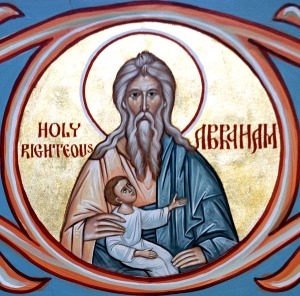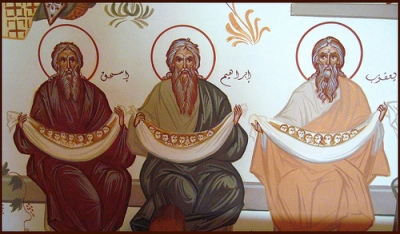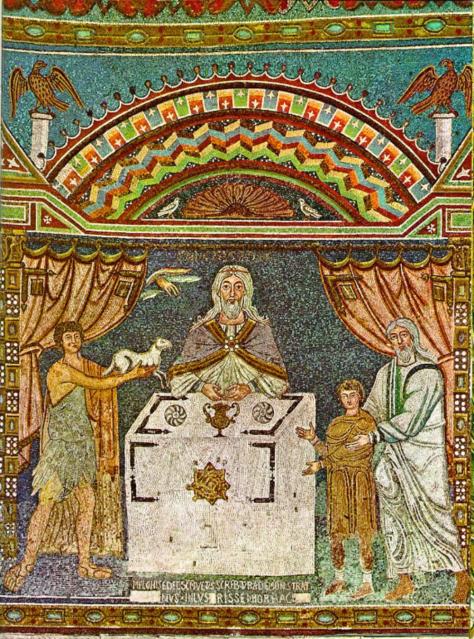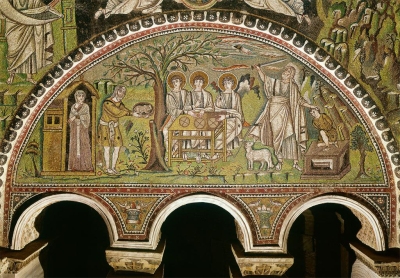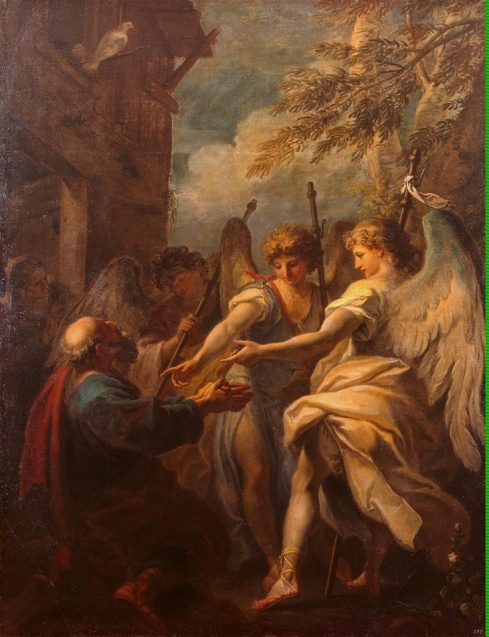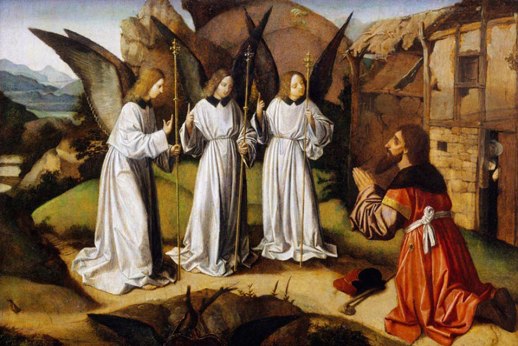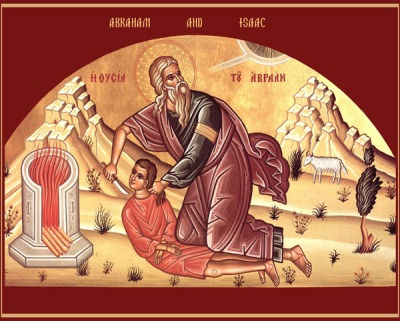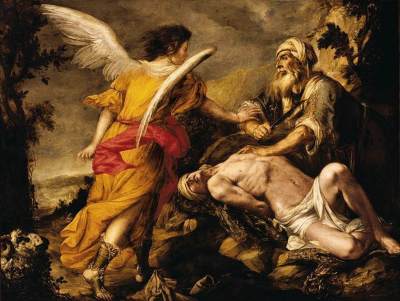Today, October 9th is the feast day of St Abraham, the Patriarch and ‘father of all believers’.
It is common for the saints of the Old Testament to be commemorated in the Divine Liturgy of the Eastern Church, and the Patriarchs and Prophets are commonly patrons of the churches (and are always referred to as ‘Saint’). Here is a fresco in which three patriarchs Ss Abraham, Isaac and Jacob appear. These might be life-size on the wall of the church so that one would get the impression that these figures are praying the liturgy with us:
I started to consider this because this is the latest in the occasional series about images of saints in the Roman Canon. I realized as I did so that I can’t remember ever being present at a Roman Rite church where there was such a commemoration. Perhaps it is time for this to change? Is there a Roman Catholic Church of St Abraham anywhere? Please let me know!
He is clearly a central figure for us. Abraham is referred to in the following passage from the words of the Mass:
Look with favor on these offerings and accept them as once you accepted the gifts of your servant Abel, the sacrifice of Abraham, our father in faith, and the bread and wine offered by your priest Melchisedech.
This is not the only daily liturgical reference to Abraham. He is referred to in the gospel canticles the Benedictus and the Magnificat sung daily at Lauds and Vespers; so there could be an incensing of his image at either of these junctures on certain days.
The place of the Patriarchs of the Old Testament in Salvation history is, as I understand it, that of establishing the practices of faith. In this sense, Abraham clearly has a place in the establishment of liturgical tradition through his being prepared to sacrifice his only son, and ultimately sacrificing a ram.
Here is an image which might be appropriate behind the altar in a church. It is a 6th century mosaic from Ravenna in Italy.
It connects the sacrifices of Abraham, Abel the Just and Melchizedek with Mass in ways both obvious and subtle. First the obvious – it connects them with the Mass by placing them in a church and clearly giving Melchizedek’s offering, of wine and bread on a recognizable altar, greater prominence. Also, the artist tells us directly who they are by writing their names in the picture. This is something that artists today should think about, I suggest. Don’t make the symbolism or connections mysterious. Tell us who the people are in writing. If there is an appropriate biblical reference that clarifies things then write that in the picture too.
The more subtle connection with Christ is the placement of the eight-pointed star on the front of the altar. This indicates that the altar itself represents Christ, the ‘eighth-day’ of Creation, whose resurrection is celebrated on the eighth day of the week, Sunday.
Another mosaic from Ravenna has Abraham as the theme.
In this we see a depiction of the sacrifice again, but also the scene is known as the Hospitality of Abraham, in which he welcomes three strangers. They are three angels under the appearance of men and are traditionally seen as symbols of the three persons of the Trinity. This second theme is the subject of many famous paintings too. After an Eastern iconographic depiction, which will be familiar to many through that of Andrei Rublev, I give two Western images. The first is 16th century Italian, the second 15th century Flemish.
And here are some more that highlight the sacrificial theme, iconographic and baroque in style respectively:
This is one of a series of articles written to highlight the great feasts and the saints of the Roman Canon. All are connected to a single opening essay, in which I set out principles by which we might create a canon of art for Roman Rite churches, and a schema that would guide the placement of such images in a church. (Read it here.) In these, I plan to cover the key elements of images of the Saints of the Roman Canon – Eucharistic Prayer I – and the major feasts of the year. I have created the tag Canon of Art for Roman Rite to group these together, should any be interested in seeing these articles as they accumulate. For the fullest presentation of the principles of sacred art for the liturgy, take the Master’s of Sacred Arts, www.Pontifex.University.
